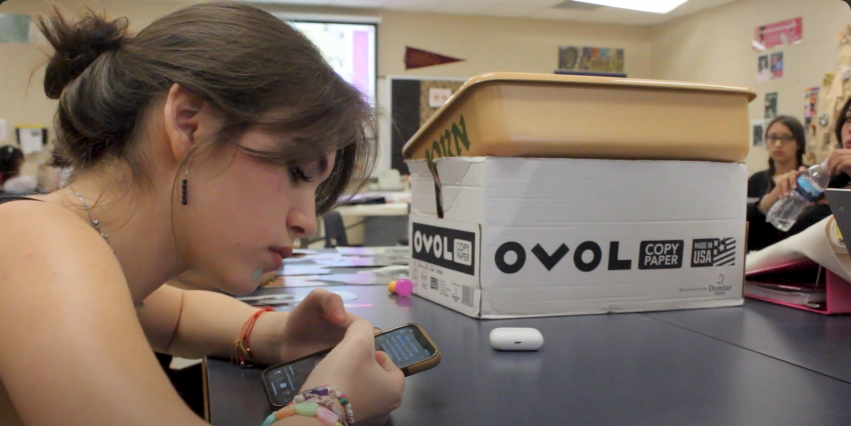
Staying up all night watching episode after episode.
by Sabrina Williams|Staff Writer
It first starts with anticipation. The craving of the glowing red screen, the inability to focus on everyday activities. Then the extreme binge: staying up for hours, eyes burning from the unblinking, religious vigil. Then school comes around way too soon. “7 o’clock already? But I only got to episode 173!” Then comes irritation, drowsiness, and paranoia. Constantly nodding off in class, snapping whenever a friend asks, “Hey, did you see that one episode-” Any of these symptoms are guaranteed signs of ‘netflixious fixationous’, an infectious disease sweeping Johnson high school, targeting anyone with a Netflix account.
“I dedicate my life to T.V. series,” senior Raquel Kimm said. “ I base my life around them. I can finish a whole season in less than a week.”
But what are users and abusers most vulnerable to? It’s hard to say, as modern studies haven’t narrowed it down to one genre or another. We are about as close to finding where this disease originated as we were in the beginning.
“I have a lot of kung-fu movies,” senior Mathias Montuadon said. “ I also watch a ton of psychological thrillers, and there’s some random stuff in there.”
But the interest gets even broader when the female factor is included.
“I’m always watching Scrubs,” Kimm said, “or How I Met Your Mother, and Mean Girls occasionally. Got to get your daily dose of Mean Girls.”
How is it that so many are being exposed to this epidemic? According to multiple surveys, 99% of all American households have at least 1 television. And among this 99%, 45% subscribe to Netflix. Therefore, over half of our population that have televisions use them for Netflix.
“Yeah, I have a T.V. in my room,” Montuadon said. “ I use it for Netflix every night right before I go to bed, that’s the best time.”
However, these statistics don’t even take handheld devices into account.
“I mostly watch netflix on my iPhone,” Kimm said.
Other common side effects of ‘netflixious fixationous’ may include absentmindedness and preoccupation.
“Well, I watch Netflix way more than I work on homework,” Montuadon said. “It’s about a 4:1 ratio.”
However, these results may vary with each viewer. Scientists have agreed that it depends on how long the victim has been exposed to the infection and how long it has gone untreated.
“Oh gawd,” Kimm said. “I watch about an hour of Netflix for every hour of homework I do.”
Some viewers are stuck in the stage of denial, unaware of the extremity and extent to which their infection has gone.
“I’m so talented,” Kimm said. “I watch so much Netflix, I’m definitely qualified to be a movie reviewer.”








